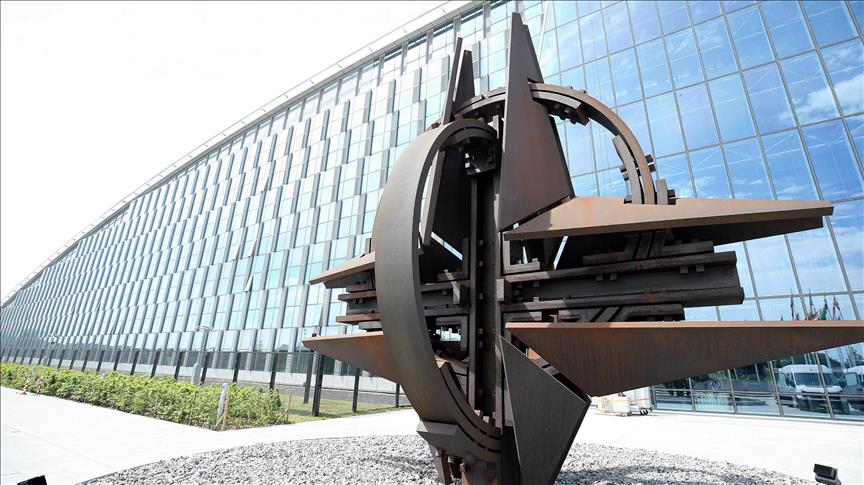 An outside view of NATO building is seen at NATO's new headquarters in Brussels, Belgium on May 29, 2018 ( Dursun Aydemir - Anadolu Agency )
An outside view of NATO building is seen at NATO's new headquarters in Brussels, Belgium on May 29, 2018 ( Dursun Aydemir - Anadolu Agency )
Brussels Hoofdstedelijk Gewest
By Serife Cetin
BRUSSELS
NATO gave Anadolu Agency a tour of its new headquarters, which began operations last month.
Bogdan Lazaroae, new NATO headquarters transition program manager, told Anadolu Agency that after the headquarters were transferred from Paris to Brussels, the number of its members increased from 15 to 29 since 1967.
Lazaroae recalled that NATO allies agreed on the new building in 1999 after the old headquarters was unable to meet the needs logistically.

The old headquarters building is expected to be returned to the Belgian government by the end of 2019.
The construction of the building which lasted for eight years cost nearly €1.17 billion and the expenditure was covered by the contributions of NATO allies. In this scope, most of the contribution was made by the United States and the least by Iceland.
The Belgian government built the building at Belgium's first former international airport. Almost 4,000 people worked at the construction every day. Though NATO pays a symbolic rent for the building, it is the owner of the building.
The headquarters were built on a 254,000 square meter area. It has 1,365 offices and nearly 4,200 staff. It is expected to host nearly 5,000 meetings and receive over 500 visitors per day.
The entrance of the headquarters named "Agora" also serves as the gathering area and has 18 conference rooms, press center, secretariat, community facilities and offices of 29 nation delegations' diplomatic and military representatives.
In order for a NATO personnel to do their routine work, they would have to walk nearly six kilometers.

The conference hall of the new headquarters will be used to host meetings of state presidents, ministers and ambassadors. The room which is equipped with amenities provides opportunity of teleconference with NATO officials placed across the world with translation in 17 different languages. No one including nations' presidents enter any electronic equipments to the hall.
Building covered fully with glass faceted surface
One of the most attractive aspects of the new NATO headquarters is that the entire building is glass faceted.
Lazaroae said the glass faceted surface of the building is representing "transparency" in alliances.
He said specific measures had been taken to protect the glass surface in view of security.

The glass also saves energy by 30 percent compared to the old building through the use of natural light.
In the environmentally friendly building lighting levels may be increased or decreased via a special system. Also lights of a room not in use automatically shut down.
The smart-building is equipped with geothermal heating and cooling systems, and water from rain is stored in special storage. Ninety percent of the water used for cleaning and in bathrooms will be met from the special storage.
An aerial view of NATO's new headquarter depicts four fingers locked with each other. The headquarter's chief architect says the design stressed the unity and cooperation between NATO allies.
The establishment agreement of NATO placed at the very entrance of the building vows that members will remain allies.








